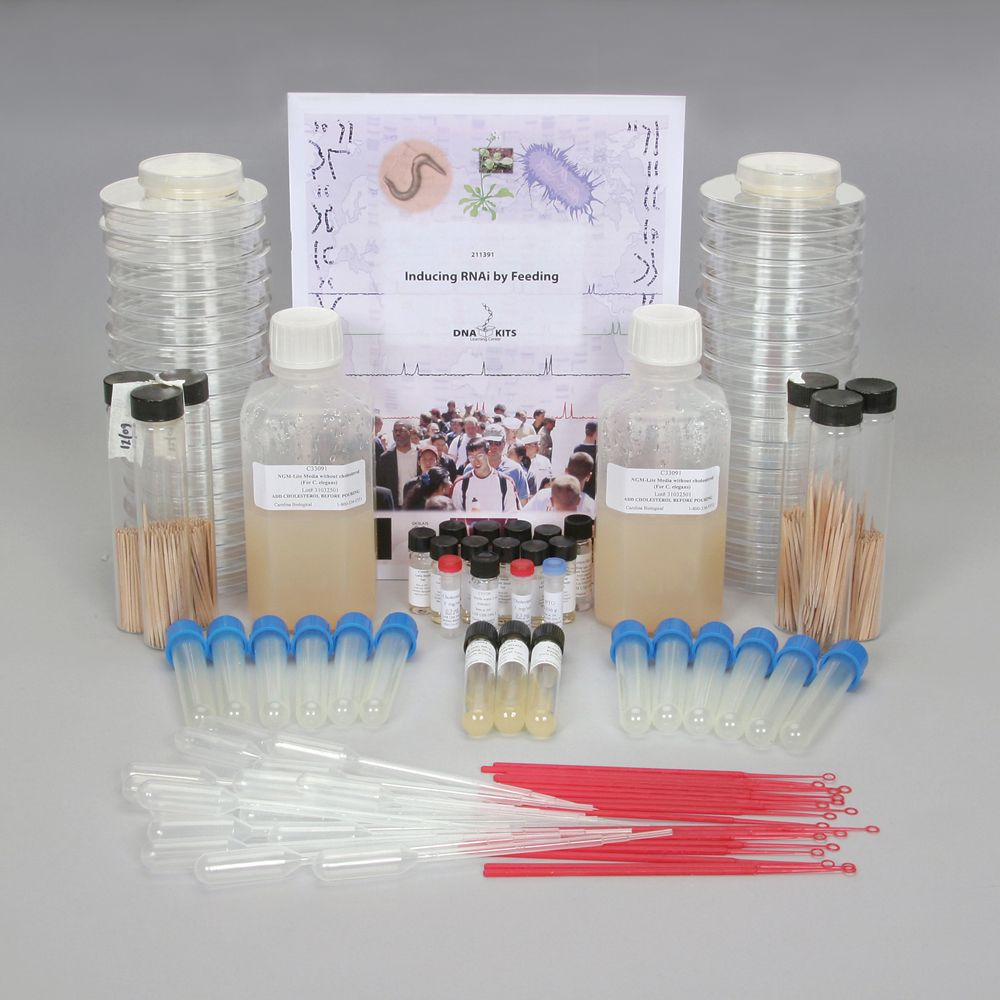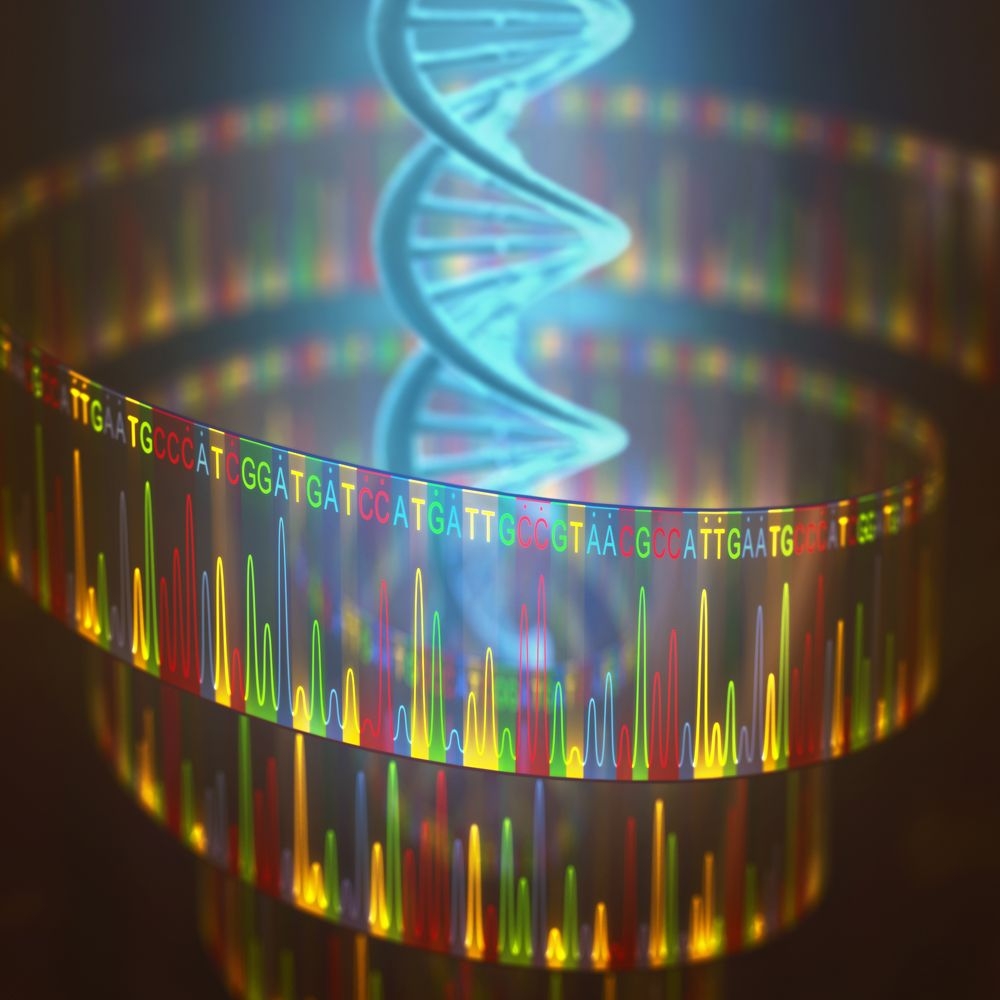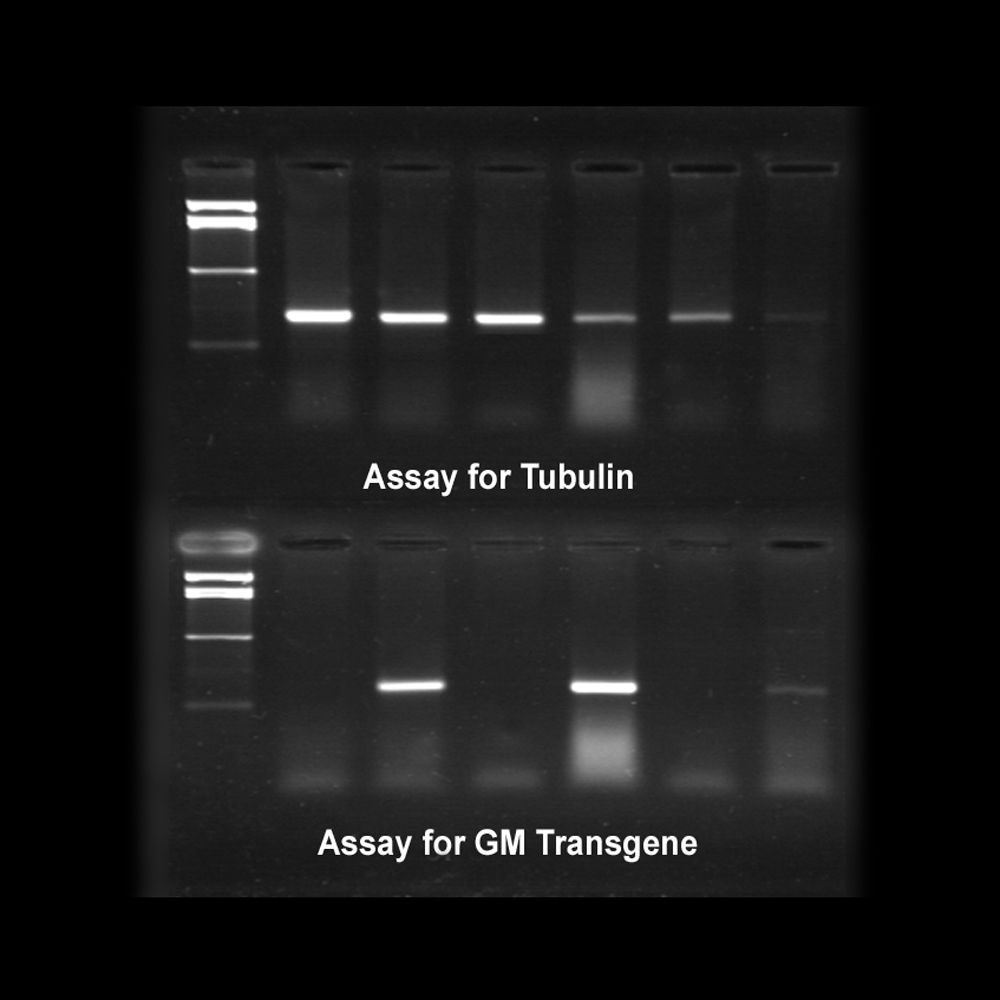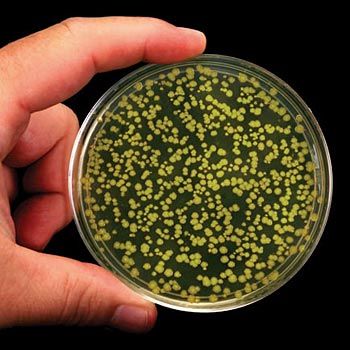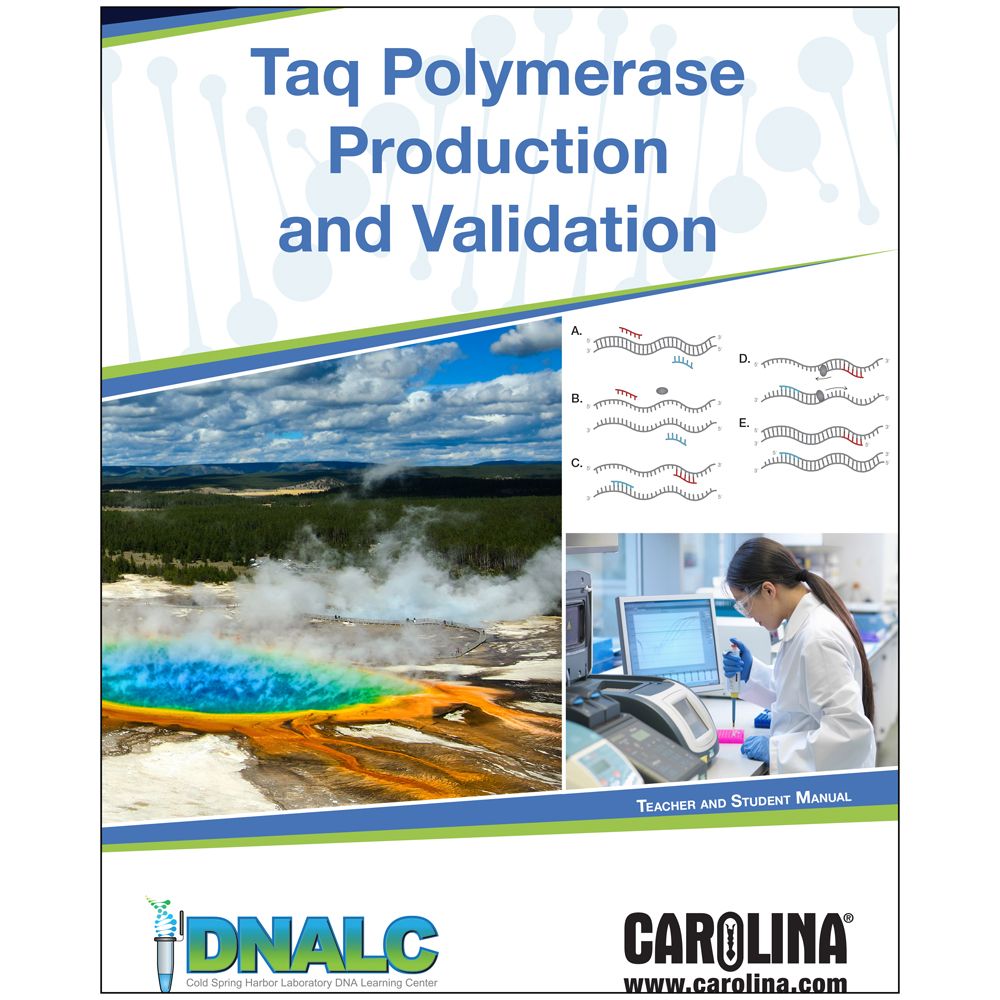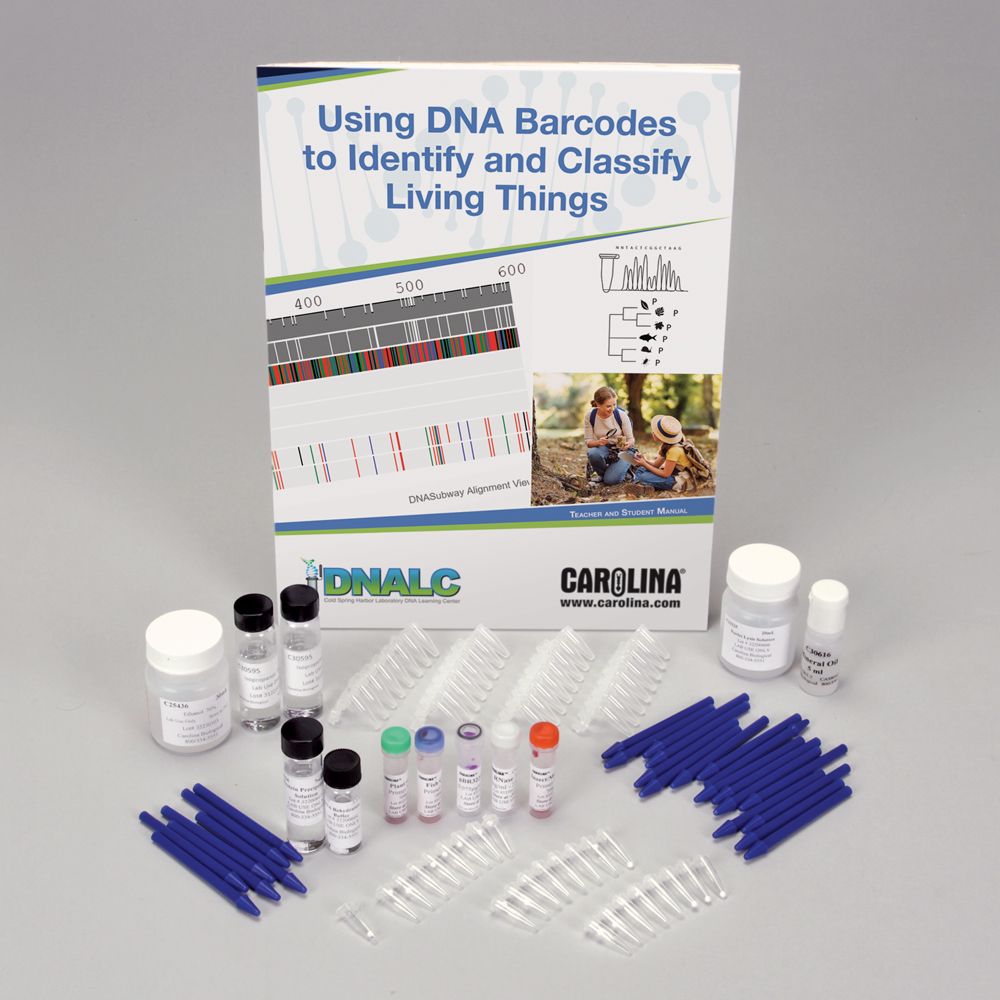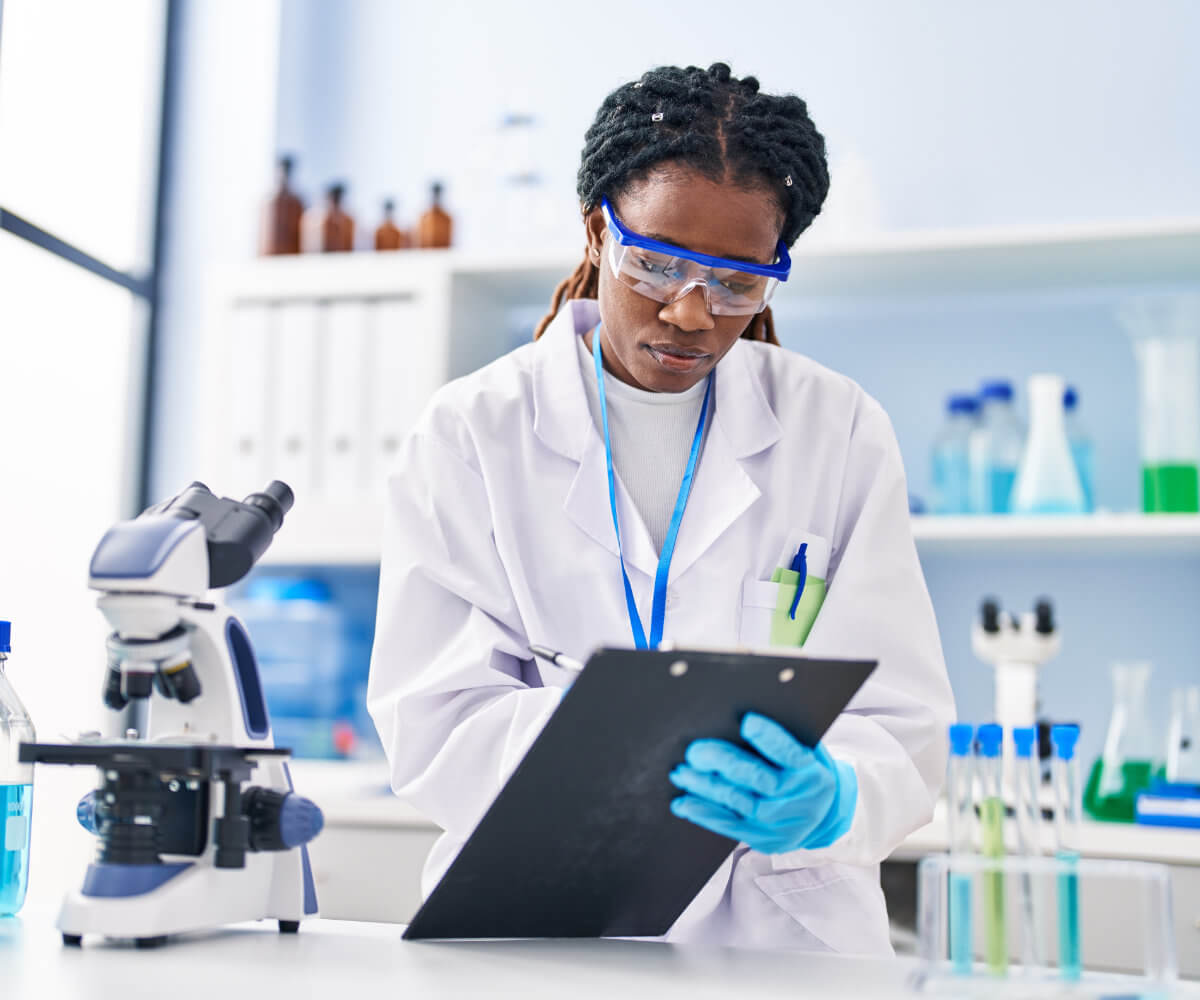
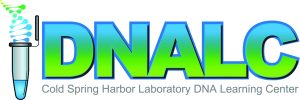
Approachable Protocols and Advanced Techniques You Can Trust
Since 1986, Carolina has worked with the DNALC to bring innovative and high-quality kits and teaching materials to educators. Our codeveloped kits make advanced concepts approachable and breakthrough techniques accessible by focusing on the unique and diverse needs of teachers and students in the classroom.
Announcing New Enhancements and Updates to Your Favorite DNALC Kits

Visual Lab Procedures offer step-by-step instructions, with detailed visuals to help students as they work through the labs.

Colorful enhanced lab flows provide time estimates and identify key lab events at a glance, to make planning easy.

A Real-World Connections resource section links knowledge and skills used in each lab to actual lab techniques, current careers, historical perspectives, and scientist profiles or examples of scientists in practice.

Paper Model Activities added to many of the kits, incorporate visualization, interaction, and modeling to help students gain a deeper understanding of a lab's molecular components; the activities may be done before starting a lab or during lab down times.

Biotechnology micro-credentials provided by Bioscience Core Skills Institute (BCSI) align to the knowledge and skills taught in many of the kits. Earning micro-credentials enables students to demonstrate biotechnology skill mastery to prospective employers. For the applicable kits, its teacher manual specifies which BCSI micro-credentials the lab supports.
Learn more about BCSI

GelGreen® DNA stain has replaced ethidium bromide stain as a safer alternative; the resulting bright green bands are comparable to SYBR®. Prefer ethidium bromide? Purchase the DNA Gel Electrophoresis Reagent Set with ethidium bromide (Item #211300)
Supporting instruction means you have everything you need to teach—such as videos, animations, websites, and activities—in addition to helping you with advanced and rapidly changing subjects such as bioinformatics.
Working with DNALC, we continue to enhance our kits’ digital support on our online platform, Carolina Science Online, along with lessons and activities on Carolina Knowledge Center.
DNALC Webinars
Featured DNALC and Carolina Kits
Most popular kits
Using a Single Nucleotide Polymorphism (SNP) to Predict Bitter Tasting Ability
Explore the molecular basis of the inherited ability to taste the bitter chemical phenylthiocarbamide (PTC). Item #211377
Detecting Genetically Modified Food by PCR
Explore a modern application of genetic engineering by investigating whether the soy or corn ingredients in various processed foods contain a genetic modification. Item #211367
Purification of Green Fluorescent Proteins
Lean how to engineer proteins using three techniques—transformation, protein purification, and protein gel electrophoresis. Item #211073
Kits for every grade level
Strawberry DNA Extraction Kit
In this exciting activity students are introduced to DNA, literally, by removing it out of a strawberry! Item #211338
DNALC Baggie Cell Model Kit
Introduce students to the concept of “form fits function” by familiarizing them with different kinds of cells, their organelles, and the specific jobs each organelle performs. Item #211336
Purification of Green Fluorescent Protein
Many students are aware of lactose intolerance, but how many understand what it means and how it relates to human evolution? Item #211337
Cutting edge biotechnology kits
Taq Polymerase Production and Validation Kit
With this one-of-a-kind kit, students purify Taq polymerase, an enzyme used in polymerase chain reactions, from bacteria engineered to produce it, then test the enzyme’s activity by performing PCR with it. Item #211165
Using DNA Barcodes to Identify and Classify Living Things
Students take a new approach to taxonomy using “DNA barcodes”—short, unique DNA sequences—to learn about the biodiversity of plants, mammals, fish, or insects. Item #211385
Inducing RNAi by Feeding Kit
Students use the Nobel Prize-winning RNA interference (RNAi) technique to silence 2 different genes in the nonparasitic roundworm C. elegans. Item #211391
Product Testimonials

